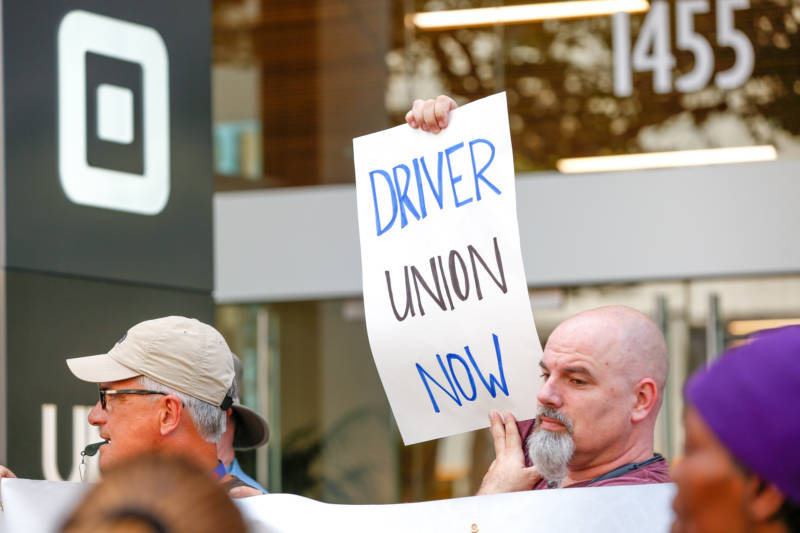The Amalgamated Transit Union, which represents public transit workers and helped drivers organize in support of AB 5, is also hoping drivers will unionize with them.
But if they choose to go to the Teamsters or SEIU (Service Employees International Union), “we’re not going to be cutting each other’s throats or anything for the members,” said Arturo Aguilar, president of the Amalgamated Transit Union Local 1277 in Los Angeles.
But many drivers are still undecided about whether they want to organize with a national union or start their own — if and when they become employees.
Nicole Moore, a Lyft driver and organizer with Rideshare Drivers United in Los Angeles, said her organization is already a union, even though it doesn’t have collective bargaining power.
“We’ve been fighting for ensuring that we have an organization, our own union, that is for drivers by drivers,” Moore said. “And that’s what we’ve been building with Rideshare Drivers United. I think the most important thing is that, whether we’re a local or a union, that we’re run by ride-share drivers and that we’re democratic.”
